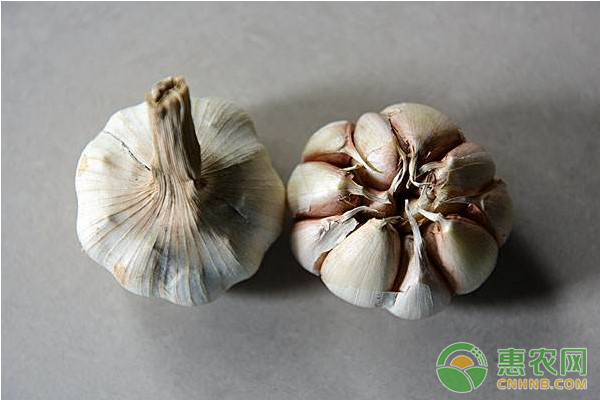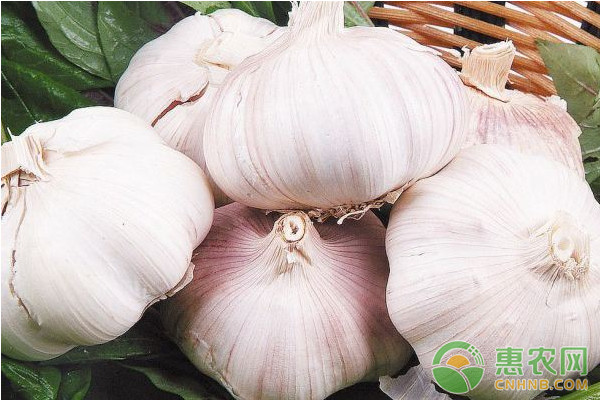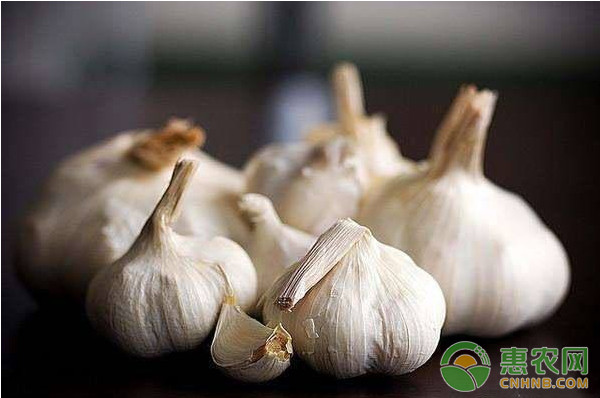What are the common physiological problems of garlic? At present, there are serious species degradation and various bad developments in garlic production. Therefore, the following are some common physiological problems and preventive measures for garlic. First, the garlic species degradation The degeneration of garlic species is that the plants are becoming shorter and shorter, the pseudo stems are thinner, the leaves are lighter and smaller, the small garlic and the single-headed garlic are increased, the early yellow plants are increased, and the yield is reduced. There are three main reasons for the species degradation: 1. Garlic is vegetatively propagated with garlic cloves, without sexual generation, which is the main cause of sexual degradation; 2, in production, such as poor soil, lack of organic fertilizer, poor physical and chemical properties of the soil, lack of water and fertilizer, high density of planting, too late picking, damage to stems and leaves, poor selection or improper cultivation management, will cause garlic species Degradation 3, viral disease, garlic is widespread in the body, when the virus accumulates to a certain extent, the species is significantly degraded. When the garlic bulb is inflated, it is in a high temperature and dry climate, which is very conducive to the spread and popularity of the virus. Therefore, the virus-induced degradation of garlic is very serious, but it is slightly worse in high latitudes. 4, in order to prevent the degradation of garlic species, should pay great attention to the use of organic fertilizer and seed selection and seed retention work. 1) The use of organic fertilizer should pay attention to quantity and quality. It is best to choose commercial organic fertilizer with good quality, such as “sea-like†seaweed organic fertilizer or “sea-like†seaweed organic-inorganic compound fertilizer to increase soil organic matter. It has good effects in improving soil physical and chemical properties and improving the resistance of garlic. 2) Add microbial fertilizer (agent), adjust the micro-ecological balance of soil (especially rhizosphere soil), degrade harmful residual substances in the soil, promote the growth of garlic, and enhance the resistance of garlic to disease and stress. The promotion and application proved that the use of “sea-shaped†seaweed microbial fertilizer (agent) has a significant effect on preventing the germline degradation of garlic. 3), garlic selection, should start from the field management, in the cultivation, should choose a good plot, pick a good garlic, pick up before freezing, heat, injury, premature germination, yellowing, loss Dried garlic with water. Sowing at the right time, rationally planting densely, cultivating strong seedlings, strengthening fertilizer and water, and timely collecting and collecting garlic. 4) Garlic should be kept in the seed. When harvesting, the seed should be selected from the field. First, the plants with normal leaves and no pests and diseases should be selected, and then the heads will be large and round. The bottom is flat without thieves, no damage, uniform size, and skin color. The color of the flesh and the number of the petal in accordance with the characteristics of this variety, single sun, single sputum and single collection, properly preserved. Second, the secondary growth of garlic According to the location where secondary growth occurs on garlic plants, it can be divided into the following three types: One to several buds are sprouted from the leaf mites of the outer leaves of the outer growth type secondary growth garlic plants, and the buds are delayed into dormancy and continue to differentiate and grow, forming a single-flowered garlic, or a flowering garlic without flower buds, or a flower The chopped garlic, as a result, produced some misplaced garlic cloves or small garlic on the outer periphery of the garlic, making the whole garlic malformed. This type of secondary growth has the greatest impact on the quality of the product. Inner layer secondary growth In the leaf axils of the inner leaves of garlic plants, the normally differentiated buds gradually enter dormancy, and the protective leaves around the scale buds continue to grow, protruding from the leaf sheath of the plants to form multiple tillers. Some tillers develop into normal garlic cloves; some bifurcations develop components of garlic, and a few of them also form calyx. The mild inner layer secondary growth has little effect on the shape of the garlic. When it occurs seriously, the garlic is shortened, the weight is reduced, the garlic petals are loosely arranged, and the upper part of the garlic is easily cracked. The formed garlic is similar to a fat normal. Garlic cloves are often selected as garlic, but after sowing, two or more garlic seedlings grow from one species of petal, which affects the yield and quality of the garlic. 2. Air bulbous secondary growth The aerial bulbs in the total sorghum of the garlic stalks are delayed into dormancy and continue to grow into small plants, even taking fine garlic stalks. Plants that have a secondary growth of aerial bulbs often shorten the garlic and lose the value of the commodity, but have little effect on the garlic. The incidence of this type is generally low. In addition to the above three basic types of secondary growth, there are cases where two types of mixing occur on the same plant. 3. Reasons for the secondary growth of garlic (1) Improper selection of garlic. Since heredity is the main factor that causes secondary growth of garlic, planting garlic should first use garlic varieties suitable for planting in this area. The garlic should have large garlic, garlic, and each garlic is obvious, 4-8 petals Form a head. If you choose a variety that is not suitable for planting in the region, it will greatly promote the secondary growth of garlic. (2) Improper environmental conditions in the storage area of ​​garlic. If the garlic is stored at 14-16 ° C or 0-5 ° C for 30 days before sowing, and the air relative humidity is 75-100%, the low temperature plus high humidity will make the garlic outer layer and inner layer secondary growth strain. The rate is increased. (3) Improper broadcast period. Garlic cloves are formed by the lateral buds of the leaf mites on the bulbs. They are also affected by temperature, light, nutrients, etc. Therefore, blind pre-sowing is also a major cause of secondary growth of garlic. (4) Garlic is not handled properly. Garlic farmers in some places like to treat the garlic cold or low temperature before sowing, and then sow it. It is thought that this will cause the garlic to sprout early. In fact, this will promote the secondary growth of the inner and outer layers of garlic. (5) The choice of the size of the garlic cloves is inappropriate. Some people think that the garlic garlic as the garlic is bigger and better, and it is easier to grow. In fact, according to the author's observation for several years, the size of the garlic cloves as a kind of garlic must be within a certain range. It is too small to form a single-flowered garlic. More secondary growth. (6) Improper cultivation management measures. Garlic has strong adaptability, but it is very sensitive to environmental conditions, nutrients and water during the growth process. The large fat water and partial nitrogen fertilizer in the management process will cause secondary growth of garlic. 4. Prevention and control measures for secondary growth of garlic (1) Use high quality garlic to make seeds. The farmer said that “good seedlings are good, and good seedling yield is highâ€. Therefore, when planting garlic, first determine the selection of garlic. You should choose garlic with white color, top buds, and disease-free, and you must resolutely eliminate broken buds and rot. Garlic cloves. (2) Improve storage conditions. 30 days before sowing, the garlic is stored at a temperature above 20 ° C and the relative humidity of the air is 75%, which can effectively control the growth of secondary growth. (3) Strict seeding period. The temperature suitable for the expansion of garlic bulbs is 20-25 ° C. When the garlic is higher than 26 ° C, the garlic enters dormancy. The sunshine time is less than 13 hours. Although the new leaves can continue to differentiate, but the lateral buds on the bulbs cannot be formed, so the garlic must be planted. Due to the strict sowing date, it is not possible to blindly plant early. Garlic farmers often say that "the Mid-Autumn Festival is not at home, the Dragon Boat Festival is not in the ground" and "Spring garlic is not out of the nine", it is very clear that autumn garlic is suitable for late September to early October, spring garlic is planted before mid-March. (4) Properly handle the garlic. Before planting, the garlic will be dried in the sun for 2-3 days, making the garlic clove loose, and the garlic cloves are easy. When the seed is peeled off, the garlic skin is removed, and the residual stem plate is removed, which can reduce the secondary growth of the garlic, and can make the sprouting early and the seedlings tidy. (5) Reasonable close planting. Reasonable dense planting is conducive to the tidy garlic and individual growth. The best row spacing of white garlic is 16×10 cm, and the best row spacing of red garlic is 10×8 cm. (6) Strengthen management measures. In the whole growing season of garlic, it is necessary to strengthen the supply of fertilizer and water, but it is not suitable for large fat water. In the most critical bulb expansion period, you can apply 8-10 kilograms of seaweed per acre (667 square meters) with water, and pour 8 times of water every 3-5 days to keep the surface dry. In this period, it is also possible to apply 1500 times of 1500 times of high-potassium seaweed extract of “Ao Luo†to foliar to supplement phosphorus and potassium fertilizer. Third, bread garlic Bread garlic is a deformed bulb that has not been swollen into garlic clove due to abnormal differentiation of garlic buds. The ratio of nitrogen, phosphorus and potassium in the base fertilizer is unreasonable, especially the potassium fertilizer is too small, the phosphate fertilizer is relatively excessive, and the application of nitrogen fertilizer is too early. Too big is the main reason for the formation of bread garlic. The measures to prevent breadcrumbs are to pay attention to the use of potassium fertilizer, nitrogen, phosphorus, potassium ratio reasonable and appropriate, appropriate amount of nitrogen fertilizer. And in the bulb expansion period, the "Australis" high-potassium seaweed 1500 times solution was sprayed 2-3 times. Four, single head garlic Single-headed garlic is a phenomenon in which garlic does not differentiate into scales, does not draw flowers, and has only one petal per head. The yield of single-headed garlic is low and there is no garlic. There are two reasons for this: 1. The spring sowing time is too late, it can not meet the need of low temperature for convulsions, and it lacks sufficient nutrients to supply the differentiation of scale buds. The result is not only convulsions, but also side buds, but in the long sunshine and warm climate, The nutrients in the leaf sheath are moved inwardly and stored in the innermost scales of the top buds, so that the inner scales of the top buds become particularly thick and form a single head garlic; 2, the garlic cloves are too small, the soil is poor, the density is too large, the number of leaves is too small, the lack of fertilizer and water, etc. will lead to the emergence of a single head garlic. The measures to prevent the single-headed garlic are to be properly broadcasted in the spring, and the garlic cloves should not be too small, pay attention to the management of fertilizer and water. The above is all the content of today, garlic farmers can actually learn a lot, especially in the current situation of garlic prices are getting worse, it is very important to improve quality. Cooking Wine,Rice Cooking Wine,Onion Ginger Cooking Wine,Sour Cooking Wine Chinese Seasoning (Shandong) Trading Co.,Ltd , https://www.zt-trading.com

